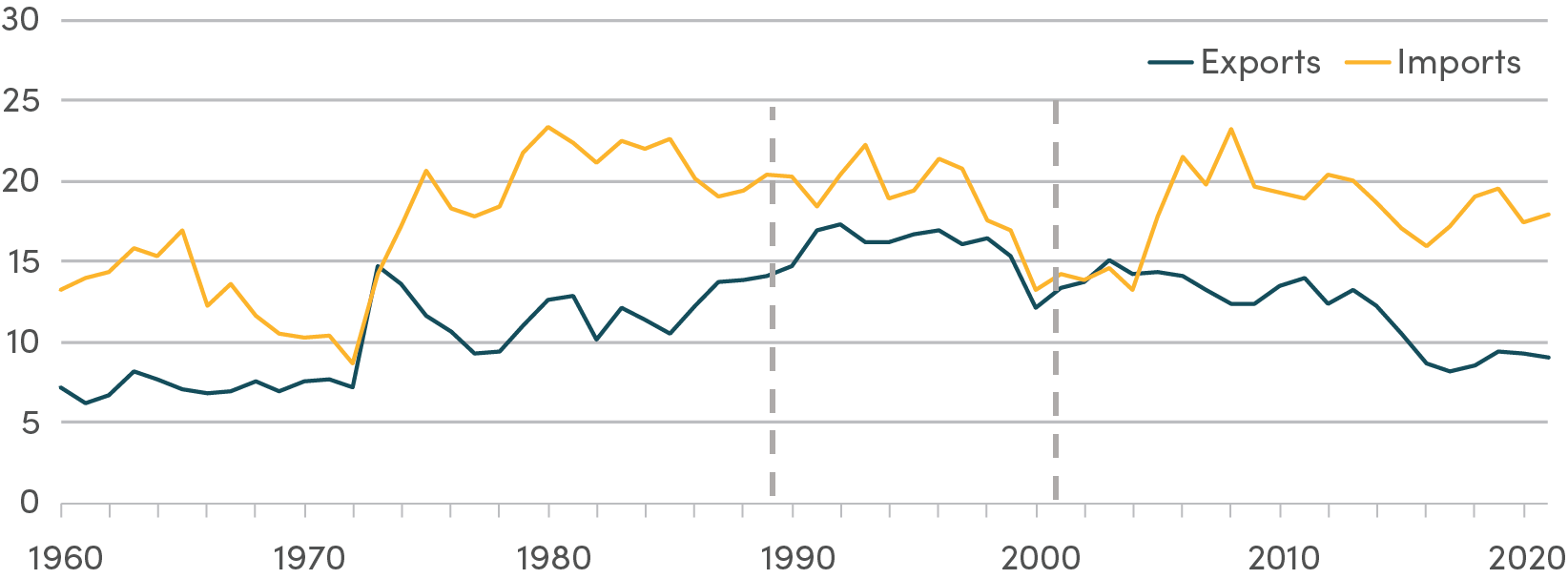Today is a special day for all researchers and practitioners of economics, especially development and international economics. The new version (v8) of the Penn World Tables (PWT) has been released. The PWT revolutionized, actually by making possible, research on economic development, especially to answer questions that needed cross-country comparisons. The PWT provided the basic data and purchasing power parity (PPP)-based estimates of key economic variables that allowed a number of important questions in development to be examined. For this reason alone, the efforts of the PWT’s founders—Alan Heston, Irving Kravis, and Robert Summers (the latter two are now deceased)—would be Nobel-worthy.
Excellent and valuable as previous versions of the PWT have been, this new version is a qualitative improvement. Apart from providing a lot of new cross-country data (on capital stock, factor shares, etc), this version is noteworthy for two conceptual reasons. For the first time, there are separate output- and expenditure based estimates of GDP (previous versions contained only the latter).
Perhaps more importantly, this version has come to grips with the time dimension of purchasing power parity-based estimates of GDP. That means that GDP growth rates are now more meaningful, accurate and stable, as well as comparable in a way that growth rates in previous versions were not. This latter is a source of personal satisfaction as it reflected and responded to the critique in a paper (available here) that Simon Johnson (MIT and Peterson Institute), Will Larson (Bureau of Economic Analysis) and Chris Papgeorgiou (IMF) and I wrote.
Two technical caveats. First, in the new version, GDP estimates for 2005 are based on actual (and detailed) cross-country prices collected in the International Comparison of Prices (ICP, 2005) project. Estimates beyond 2005 (for non-OECD countries) are extrapolated according to procedures that are still not robust. For this reason, care should be exercised in using post-2005 estimates that use purchasing power parities. (Pre-2005 estimates make use, as far as possible, of prices collected in previous ICPs).
Second, the guide to the PWT favors the use of growth rates based on national income accounts data for cross-country empirical work. This is not right and it is as if the new version of the PWT does not have the courage of its own conviction (and innovation). For cross-country work, especially for questions over over longer horizons, growth rates based on the RGDPo and RGDPe variables can be used and in fact should be favored over the national income accounts-based growth rates. These growth rates will reflect purchasing power parities both across countries and over time.
These caveats apart, hearty congratulations and heart-felt thanks to Robert C. Feenstra, Robert Inklaar, and Marcel Timmer for carrying on the invaluable PWT work and tradition.
CGD blog posts reflect the views of the authors, drawing on prior research and experience in their areas of expertise.
CGD is a nonpartisan, independent organization and does not take institutional positions.





